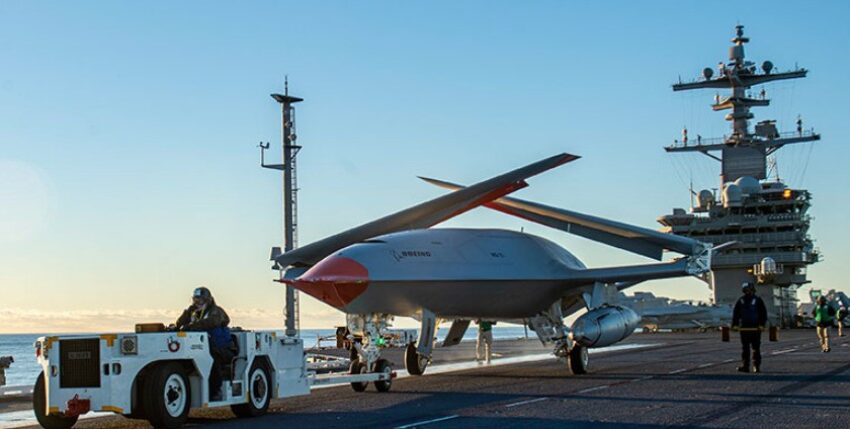With China in mind, the American navy is to receive additional ships. This also raises the question of the shipbuilding industry's capacities on the other side of the Atlantic.
The US Navy published the Navigation Plan 2022 (Navplan 2022) on 26 July. These documents, written at irregular intervals, provide an insight into the structural and capability planning of the US naval forces. The author of the Navplan is the Chief of Naval Operations (CNO), in this case Admiral Michael Gilday.
The new fleet composition propagated in the Navplan caused the biggest stir. The stated goal is a battle force of 373 manned ships plus 150 large, unmanned surface and underwater vehicles (USVs and UUVs). The aim is to have an aircraft fleet of around 3,000 units. The 373 manned ships are to include 291 armed warships: 12 strategic submarines of the COLUMBIA class, 66 fighter submarines, 12 aircraft carriers, 96 large surface warships (destroyers), 56 small warships (frigates and LCS), 31 large and 18 light amphibious warships. They will be supplemented by 82 logistics ships, supply vessels and other support ships that can provide direct support for combat operations. This targeted composition is to be realised by 2045.
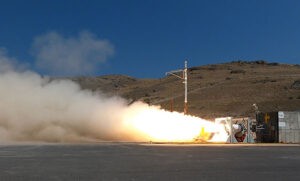
The stated goal of a battle force comprising a total of 523 units corresponds to an expansion of more than 50 per cent compared to today. In the manned fleet, the increase will primarily be in frigates, hunting submarines, logistics ships and the new category of light amphibious ships. However, the real key to expanding the fleet lies in the introduction of unmanned surface ships the size of corvettes and unmanned submarines, which are to make up around a third of the tactical fleet. Operational concepts are still being worked out, but these new types of ships will be used for both combat and reconnaissance missions.
Navplan 2022 is already the fourth document this year that deals with targets regarding the size and composition of the future naval fleet. The previous documents show a wide degree of dispersion in this respect - for both manned and unmanned units. Admiral Gilday also addresses this diversity of structural proposals in the Navplan. The new document "complements the 30-year fleet construction plan and the Force Structure Assessment [study] from this year", writes Gilday. Navplan 2022 thus contributes a long-term strategic vision that instrumentalises the Navy's organisational learning curve based on simulation and technological research and development, explains the CNO. "Aligning our force structure development to the target year of 2045 will guide the most significant decisions and investments the Navy decides to make over the course of the coming, pivotal decade."
Increased combat effectiveness
Gilday emphasises that the new fleet will not only be larger, but also - due to the introduction of new ship types, sensors, weapons and operational tactics - stronger in combat. The most important reason for the increase in the fleet is the continuous expansion of the Chinese naval forces. The Navy's current operational doctrine provides for a large number of armed ships to sail separately but fight in a coordinated manner (Distributed Maritime Operations, DMO). This is not least in order to compensate for the numerical advantage that the enemy already has. The expansion of the fleet with powerful unmanned units will make it possible to implement this strategy. It will also ensure that the US Navy can continue to operate successfully in two separate conflicts simultaneously in the future.
The implementation of the DMO concept is dependent on six specifications regarding the development of the fleet structure. The Navplan 2022 summarises these requirements:
- Increased range: The introduction of long-range precision weapons on all carrier platforms increases offensive capability and self-protection.
- Deception: Deception measures - including stealth, use of cover, mobility, emissions containment and electronic warfare - to reduce the enemy's surveillance capability and situational awareness and increase your own freedom of manoeuvre.
- Defence capability: Integration of directional energy weapons and kinetic defences to neutralise enemy attacks.
- Power distribution: The distribution of forces and the introduction of smaller manned and unmanned weapon carriers enables the enemy to be threatened by several axes of attack. This makes it more difficult for the enemy to establish a situational picture and to initiate countermeasures.
- Assured supply: a robust logistics structure for the supply and maintenance of the forces even on the last tactical mile at sea.
- Decision guidance: Data and communication networks protected against interference and cyber attacks, the integration of artificial intelligence (AI) and accurate data collection are designed to speed up tactical decision-making. The networking of sensors, weapons and decision-makers makes it possible to concentrate firepower without jeopardising the forces deployed.
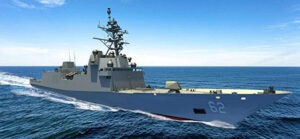
Interoperability
Another focus of Navplan 2022 is on strengthening interoperability with allies and partners, both in the context of deterrence and warfare. The importance of a strong global presence even in peacetime - as a signal to potential adversaries and as a means of promoting cooperation with partners - is emphasised. "Our alliances and partnerships are our most important strategic advantage. [...] Through [ongoing] co-operation, we strengthen our ability to prevail in conflict and enhance integrated deterrence by presenting a united front against potential adversaries."
Here too, the new Navplan reflects a priority of Gilday, who wants to raise the standards of interoperability by one dimension. "When I talk to allies and partners, I often use the word 'interoperability' because that's something we should all strive for," he explained during the Rimpac manoeuvre in July. "By that I mean that the ships of an ally or partner can take on the same operational tasks as American ships." In both the Atlantic and Indo-Pacific regions, the integration of American forces into allied ship formations and vice versa has been increasingly practised for years. This is based on the realisation that even an expanded US fleet will be dependent on allies in the event of a major war. The admiral is also striving for new multinational concepts in the Middle East. In August, he cited the US Navy's Task Force 59 in Bahrain as an example. The unit is coordinating the deployment of unmanned boats and aircraft with "six or seven" partner countries to create a detailed picture of the situation in the Red Sea and Persian Gulf. By summer 2023, 100 networked unmanned systems are to be deployed, most of which will be provided by the partners, explained Gilday.
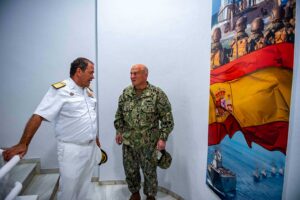
Realisation as a challenge
It remains questionable whether the stated target is realistic. In order to achieve a battle force of 523 units by 2045, the fleet must grow by ten units per year in real terms. As an average of around ten ships are decommissioned each year, the shipyard industry would have to deliver 20 units per year. While unmanned and smaller manned units as well as supply ships could be built at a larger number of shipyards, potential infrastructure bottlenecks remain in the expansion of the destroyer and submarine flotillas. Admiral Gilday openly admits this: "Our industrial capacity is limited," the CNO explained at an event organised by the Heritage Foundation in August. "My ambition would be to optimise the production lines for destroyers, frigates, [amphibious] ships and logistics ships."
However, in order to motivate the economy to make the necessary infrastructure investments, the procurement system would have to switch to awarding longer-term contract guarantees instead of the current practice of awarding contracts on an annual basis or in small instalments. Whether Congress would be prepared to agree to this remains questionable.
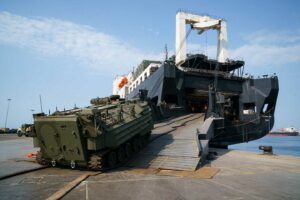
Finally, the question of financing a massive expansion of the fleet remains. The Navplan 2022 calls for a long-term, purchasing power-adjusted increase in the naval budget of three to five per cent. This is intended to ensure fleet modernisation and expansion while maintaining a high level of operational readiness. A majority in Congress is prepared to approve higher defence spending. It remains to be seen whether this trend will continue over the next 20 years.
Sidney E. Dean

